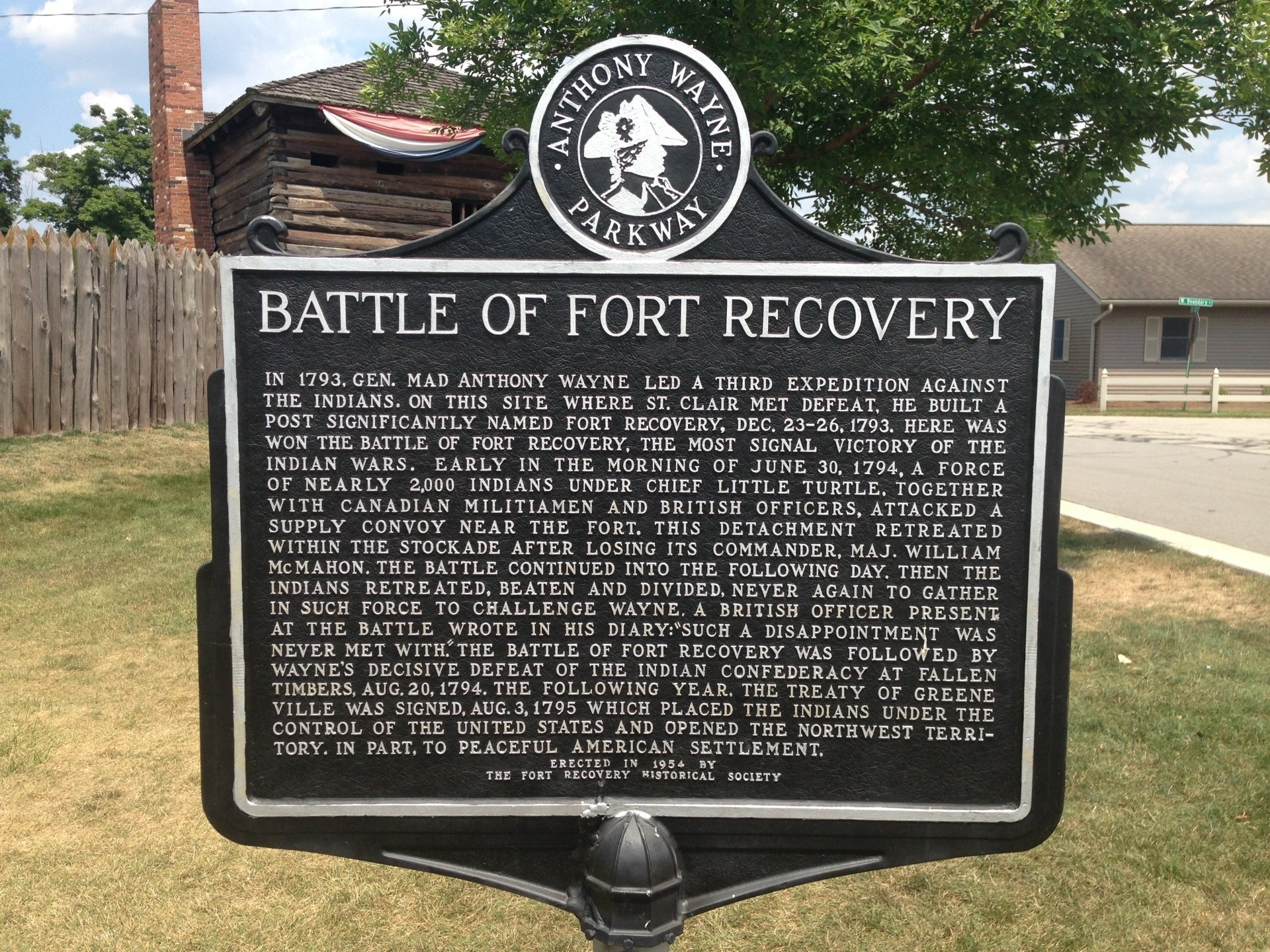The Battle on the Banks of the Wabash -- The Battle of Fort Recovery 1794
After the Revolutionary War many citizens of the 13 states began to come across the Appalachian Mountains to settle the rich lands of the Northwest Territory. The Native Americans greatly resented this intrusion onto their land and proceeded to employ every measure possible to frighten the settlers back to the East. Hearing the pleas for protections coming from the Northwest Territory, President Washington sent General Harmar and the small American army to "teach the Indians a lesson."
The general and his army were the ones to be surprised and embarrassed. After Harmar’s humiliating loss, Arthur St. Clair was put in charge of raising an army and finding a way to make the Ohio Country safe for settlement by the white man. He was an appropriate choice since he had military leadership experience during the French and Indian War and the Revolutionary War and because he was very familiar with the Northwest Territory, having served as its first governor.
With this army Arthur St. Clair began his journey up through the Northwest Territory in the fall of 1791. Since the army was proceeding through virgin forest land, the progress was very slow. With hatchets and axes, the army proceeded to cut a road from Fort Washington (Cincinnati) to the north. St. Clair believed that if a series of forts were built through this territory, the mere presence of the forts would encourage the Indians to behave.
It was on November 3, 1791, that St. Clair’s American Army arrived on the banks of the Wabash River thinking that it was the St. Marys River. Although everyone was aware that there was much Indiana activity about the area, the tired and demoralized men pitched camp without erecting any kind of fortifications.
Early the next morning, the Indians attacked in numbers never anticipated. The Kentucky militiamen who were to be the first line of defense, were rendered helpless at the sight of the war painted faces and the sound of blood curdling cries as the Indian warriors swooped down upon them. Not only did the militia not hold their line of defense, but they totally threw the artillerymen into a state of confusion as they rushed across the river and straight into the artillery camp. The militia had hopes of finding safety within the main body of the army.
Within one hour’s time, the Indians had the American Army totally surrounded and within three hours, 900 to 1,200 soldiers lay dead or mortally wounded. It was obvious from the beginning that it would be an impossible victory for the army, but because they were surrounded, retreat was impossible. Finally, Colonel Darke lead a charge which drove a wedge through the Indian army and enabled those soldiers and civilians who were able to escape down the road to Fort Jefferson. General St. Clair did survive the battle -- even though he had four horses shot out from under him. Major General Richard Butler and many other officers lost their lives during the battle.
Mad Anthony Wayne was appointed by Washington to succeed St. Clair as the Commander-in-Chief of the army. Wayne made it clear from the outset that he was in charge and that he would have an army of 2,600 well trained, disciplined men....
On June 30, 1794, a combined Native American Army of over 2,000 warriors, under the command of Little Turtle of the Miamis and Blue Jacket of the Shawnees, made a frontal attack upon the fort. Around the outside of the fort were camped 100 sharpshooters under the command of Major McMahan. Before McMahan and his men could be safely worked within the protective walls of the fort, the Major and 50 of his men were killed. But the addition of the 50 surviving riflemen to the garrison of 200+ soldiers within the fort proved to be instrumental to the defense of Fort Recovery.
Following the attack on the morning of June 30, a two day battle ensued. The obvious difference between the circumstances of this battle and that of 1791 was the presence of the fort. Although the odds in the second battle were much worse as compared to St. Clair’s defeat, the structure of the fort gave the soldiers the protection they needed to successfully defend themselves. As a result, after two days of bloody battle the Indian confederation gave up their assault on Fort Recovery.
Modern historians recognize the significance of the battle in Fort Recovery. It was the 1794 battle that "broke the back of Indian resistance and lead the way to the signing of the Treaty of Greeneville and to the opening up the Northwest Territory for settlement by the white man."


